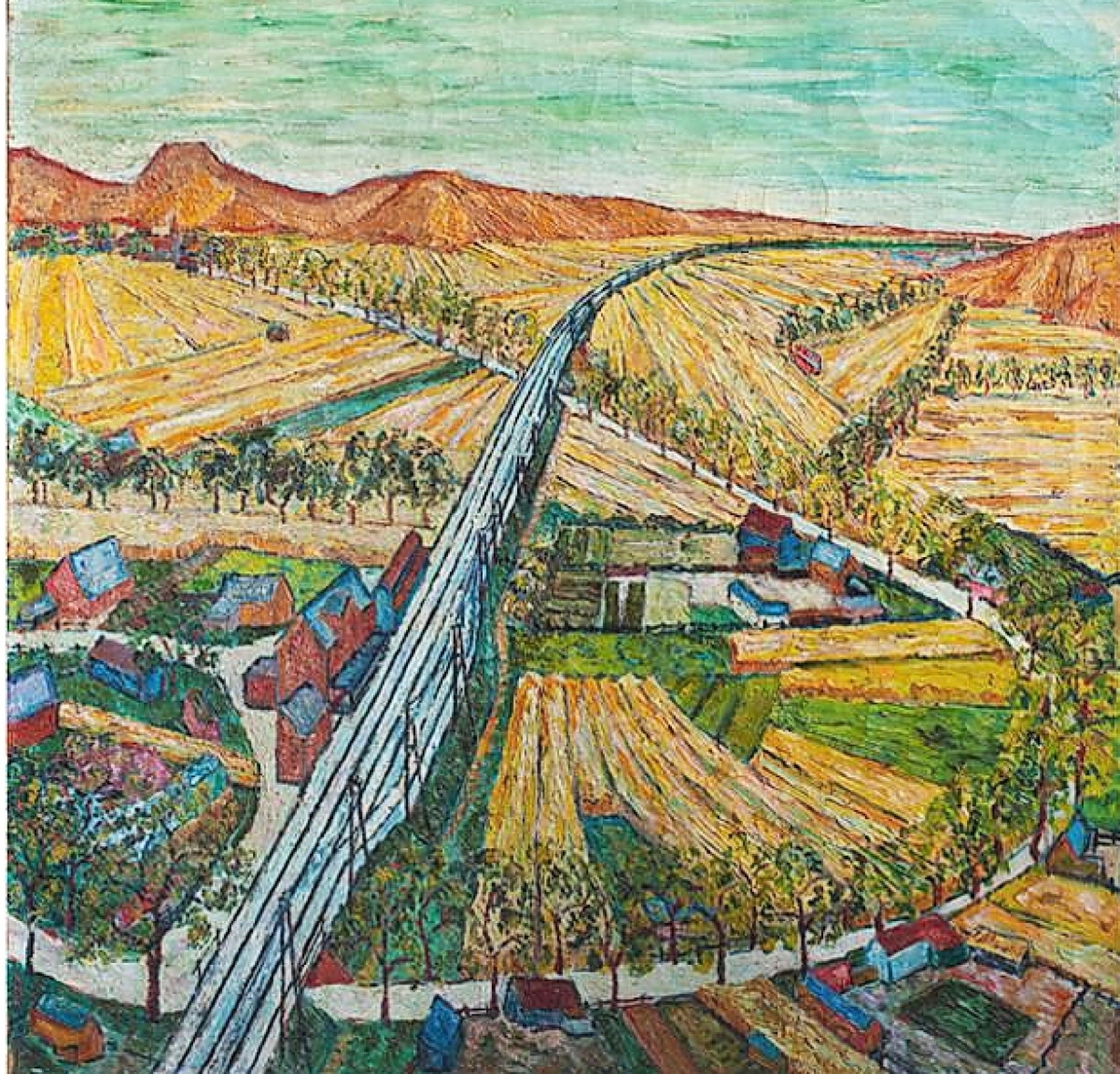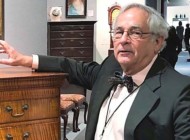By W.A. Demers
NEW YORK CITY – The landscape of van Gogh paintings is littered with fakes.
So shows the trend over the past three decades, with an oft-cited 1997 investigation by The Art Newspaper casting doubt on the authenticity of at least 45 van Gogh paintings and drawings housed in leading museums around the world.
Enter New York collector Stuart Pivar (b 1930), who news reports say has claimed to have discovered a long-lost van Gogh landscape, “Auvers, 1890” in its original condition and signed on the back by “Vincent.” And he is said to be enlisting the Van Gogh Museum in Amsterdam to authenticate his find.
An unknown van Gogh is easier to find than Pivar, apparently. A Google search brings up a Wikipedia profile describing him as an art collector from Brooklyn, N.Y., a luminary who founded the New York Academy of Art with Andy Warhol in 1979 and someone who has trained as a plastics chemistry scientist. If you try to track him down through the plastics firm that has him listed as chief executive officer, you will dead end at a website that is “under construction” and a phone number that gives an out-of-service message when dialed. Other social media searches bring up references to Jeffrey Epstein, for whom Pivar is said to have been an art consultant, and other art world controversies. Pivar said in a 2019 interview in Mother Jones that he ended that friendship after learning about allegations of sexual assault, calling Epstein, “A very sick man.”
That is not to say, however, that Pivar and an associate, Michael Mezzatesta, have not managed to successfully place articles about a rediscovered long-lost Vincent van Gogh masterpiece, allegedly obtained at a country auction, in several publications, including The New York Post’s Page Six column, the Smithsonian magazine and a publication called whitehot magazine of contemporary art.
According to Pivar’s quote in the Post, “This is what we are considering to be the greatest art find in 100 years. It’s the biggest painting van Gogh ever made [and] the only one he ever made in a square format. It is on its way to the van Gogh Museum in Amsterdam because they have requested to see it and authenticate it.”
A spokesperson for the museum replied to an email query, “The museum is aware of this piece. However, it is policy to only communicate with the owner of a work regarding their submitted authentication request.”
The square-format painting, signed and dated 1890, is purportedly a panorama of the valley of Auvers in France, where van Gogh lived in the weeks leading up to his death in July 1890. The composition depicts wheat fields crisscrossed by a sinuous railroad line and roadway. It is said to have a label of Twentieth Century collector Jonas Netter.
If authenticated, the 36-by-36-inch work would be van Gogh’s largest painting and his only painting in that format.
News reports say that Pivar is being assisted in his investigation into the alleged van Gogh with the help of Michael Mezzatesta, said to have been formerly with the Kimbell Museum in Fort Worth and director emeritus of Duke University Museum of Art. Neither institution when contacted would verify those affiliations. Mezzatesta is quoted in the Whitehot article as stating, “The picture is in pristine original condition, painted on a coarse burlap canvas consistent with those used by van Gogh late in his career. It is unlined and in its original stretcher to which it is tacked by small Nineteenth Century nails.
“The reverse of the canvas bears the signature ‘Vincent’ in an entirely credible hand and what appears to my eye the date ‘1890’ rendered in the fugitive walnut brown ink typical of many of van Gogh’s drawings.
“The label on the back of the stretcher was another revelation as it is listed as the property of Jonas Netter, a leading collector in Paris in the early decades of the Twentieth Century.
“The back of the canvas bears the numbers ‘2726’ – a possible inventory number? – in white chalk. The presence of a so-far unidentified wax seal on the stretcher provides a further clue.”
Until the Van Gogh Museum comes up with a thumbs up or down regarding “Auvers, 1890,” the art world will wonder if van Gogh late in his career rediscovered his native Dutch landscape tradition.





